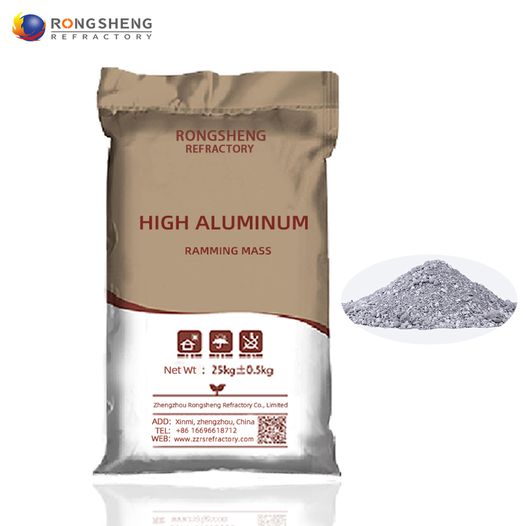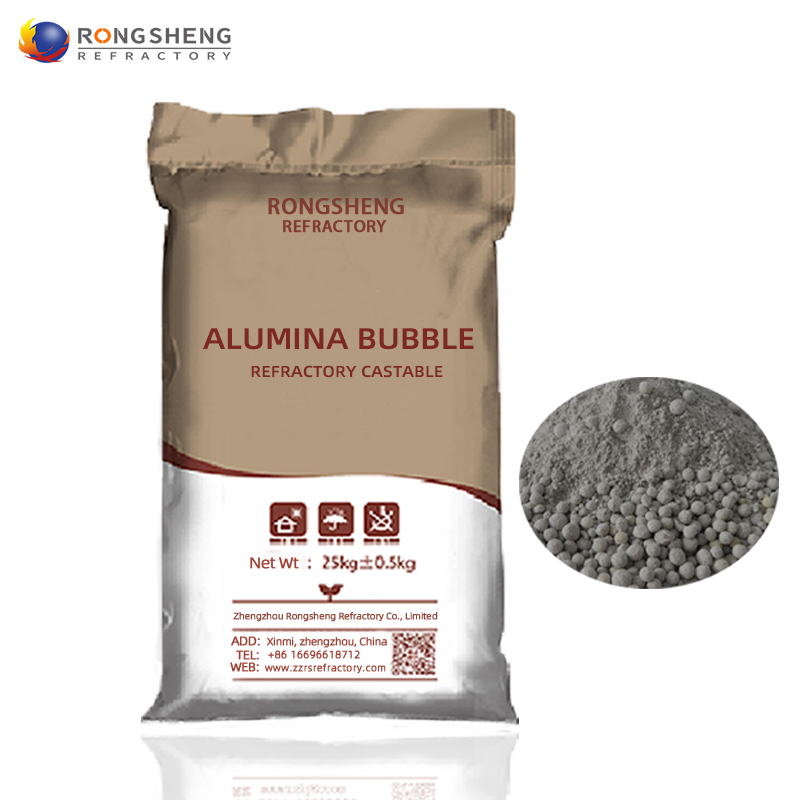Het verschil tussen castables en rammaterialen
Castables and ramming materials are both unshaped refractory materials. Castables and ramming materials are made of various aggregates, powders, and binders in a reasonable proportion. They are both unshaped refractory materials. Although they are the same type of amorphous refractory materials, they differ greatly.
What are the differences between castables and ramming materials?

Construction methods are different
Ramming mass is constructed by ramming and hardened by heating. It is usually formed directly or after adding liquid by pounding (manual or mechanical) or vibration and hardens when the temperature is higher than room temperature.
Castables are constructed by pouring and can harden without heating. It is mainly delivered in dry form and is used after mixing with water or other liquids. Usually, vibration casting, non-vibration (self-flowing) gieten, ramming, spraying, or tamping when necessary are used to form and harden without heating.
Different material classifications
Ramming materials are classified according to materials: hoge aluminiumoxide, klei, magnesite ramming mass, dolomiet, zirconium, and silicon carbide-carbon refractory ramming materials.
Castables are classified by material: 1. According to porosity distribution, there are two types: dense vuurvaste gietstukken and insulating refractory materials with a porosity of not less than 45%; 2. According to binders, they are divided into hydraulic bonding, chemical bonding, and cohesion and combined with refractory castables.

Different applications
Castable is the most widely produced and used unshaped refractory material at present. It is mainly used to construct various heating furnace linings and other integral structures. It is used in heavy-duty furnaces and heating equipment in metallurgy, aardolie, chemische industrie, bouwmaterialen, elektrische energie, and machinery industry. High-quality shock absorbers are widely used in metallurgy, bouwmaterialen, en non-ferrometalen. Smelting, chemisch, machines, en andere productie-industrieën. Products can also be used in smelting furnaces.
The ramming material is a bulk material made of silicon carbide, grafiet, and electrically calcined anthracite as raw materials, mixed with various ultrafine powder additives, and fused cement or composite resin as a binding agent. Het wordt gebruikt om de opening tussen de koelapparatuur van de oven en het metselwerk of het vulmateriaal voor de egalisatielaag van het metselwerk op te vullen. The ramming material has good chemical stability, erosiebestendigheid, en slijtvastheid.
 Rongsheng Vuurvaste Fabriek
Rongsheng Vuurvaste Fabriek
WeChat
Scan de QR-code met wechat